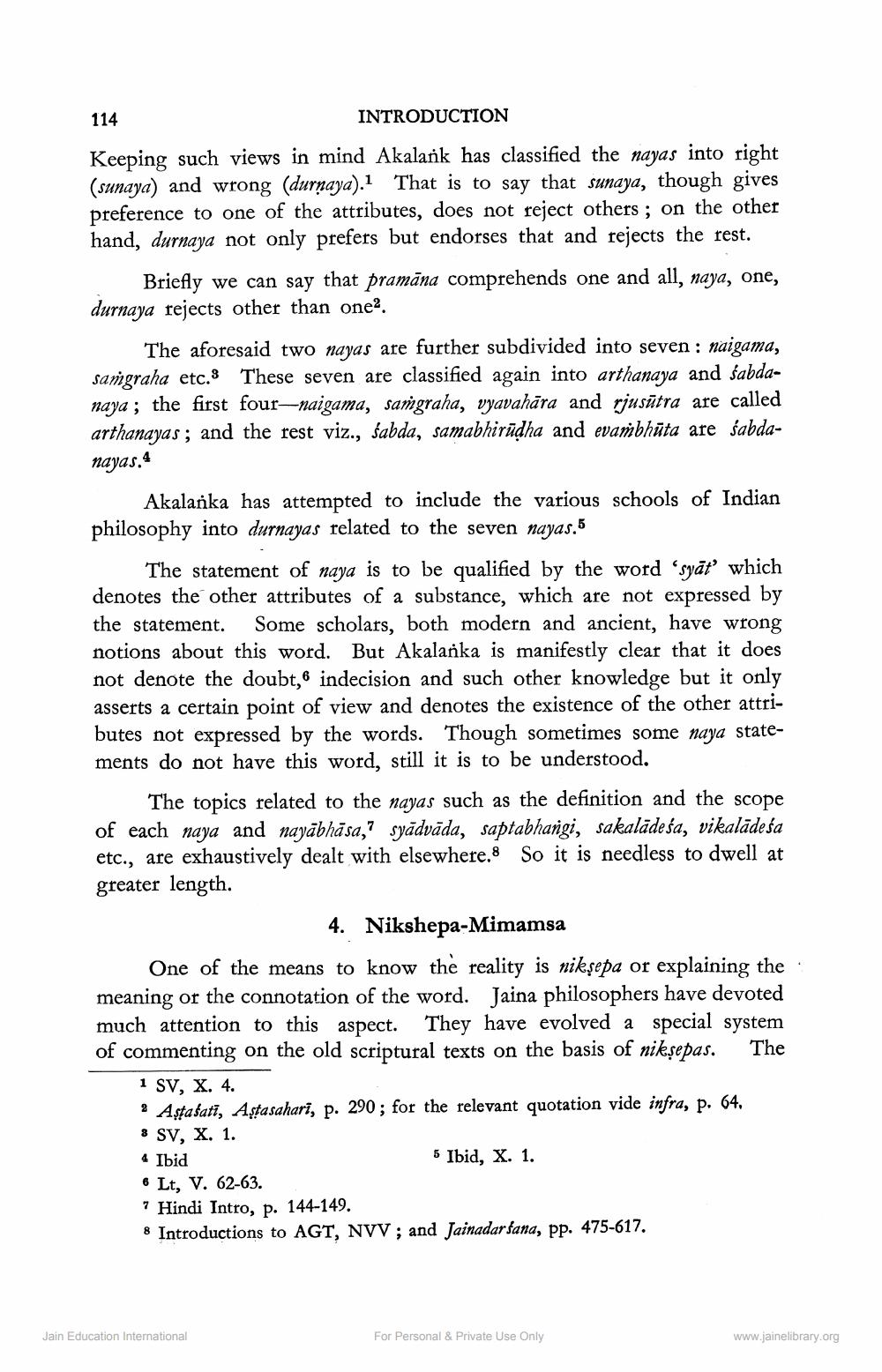________________
114
INTRODUCTION
Keeping such views in mind Akalarik has classified the nayas into right (sunaya) and wrong (durnaya).1 That is to say that sunaya, though gives preference to one of the attributes, does not reject others ; on the other hand, durnaya not only prefers but endorses that and rejects the rest.
Briefly we can say that pramāna comprehends one and all, naya, one, durnaya rejects other than one.
The aforesaid two nayas are further subdivided into seven : naigama, samgraha etc. These seven are classified again into arthanaya and sabdanaya; the first four-naigama, samgraha, vyavahāra and rjusūtra are called arthanayas ; and the rest viz., śabda, samabhirūdha and evambhūta are sabdanayas. 4
Akalanka has attempted to include the various schools of Indian philosophy into durnayas related to the seven nayas.5
The statement of naya is to be qualified by the word “syāt' which denotes the other attributes of a substance, which are not expressed by the statement. Some scholars, both modern and ancient, have wrong notions about this word. But Akalanka is manifestly clear that it does not denote the doubt,6 indecision and such other knowledge but it only asserts a certain point of view and denotes the existence of the other attributes not expressed by the words. Though sometimes some naya statements do not have this word, still it is to be understood.
The topics related to the nayas such as the definition and the scope of each naya and nayābhāsa,? syādvāda, saptabhangi, sakalādeśa, vikalādesa etc., are exhaustively dealt with elsewhere.8 So it is needless to dwell at greater length.
4. Nikshepa-Mimamsa One of the means to know the reality is niksepa or explaining the meaning or the connotation of the word. Jaina philosophers have devoted much attention to this aspect. They have evolved a special system of commenting on the old scriptural texts on the basis of niksepas. The
1 SV, X. 4. ? Astašati, Aştasahari, p. 290; for the relevant quotation vide infra, p. 64. 3 SV, X. 1. 4 Ibid
5 Ibid, X. 1. 6 Lt, V. 62-63. ? Hindi Intro, p. 144-149. 8 Introductions to AGT, NVV; and Jainadarśana, pp. 475-617.
Jain Education International
For Personal & Private Use Only
www.jainelibrary.org




